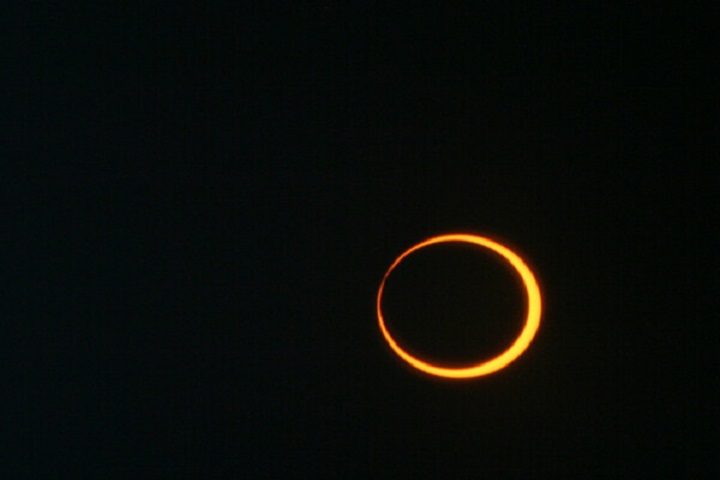
NASA Highlights Media Opportunities for Upcoming Ring of Fire Eclipse
WASHINGTON, Oct. 6, 2023 /PRNewswire/ — On Saturday, Oct. 14, the Moon will pass between Earth and the Sun, giving people across the United States an opportunity to see an annular solar eclipse. NASA will host live coverage of the eclipse starting at 11:30 a.m. EDT. Media have an opportunity to interview NASA experts live prior to the eclipse, and those on site at two locations where NASA will broadcast live also can request interviews that day.
Also known as a ring of fire eclipse, an annular solar eclipse happens when the Moon is at or near its farthest point from Earth. Because the Moon is farther away than it is during a total solar eclipse, the Moon appears smaller and doesn’t block out the entire Sun when it passes in front of our star. Instead, the Moon leaves a bright ring of Sun visible at the eclipse’s peak, creating the ring of fire effect.
Watch the agency’s eclipse coverage live on NASA Television, the agency’s website, and the NASA app. NASA also will stream the broadcast live on its Facebook, X, and YouTube social media accounts.
This eclipse will be visible along a narrow path stretching from Oregon to Texas in the U.S. Outside this path, people across the contiguous U.S. – as well as Puerto Rico and parts of Alaska and Hawaii – will see a partial solar eclipse, when part of the Sun is covered by the Moon without creating the ring of fire effect.
NASA’s coverage will be hosted from broadcast locations along the path of annularity in Kerrville, Texas, and Albuquerque, New Mexico. NASA’s coverage will include live views of the eclipse from multiple locations, interviews with scientists and other experts, as well as a live Q&A segment. Anyone can submit questions by using #askNASA.
The eclipse broadcast also will feature live views of sounding rockets launching from White Sands, New Mexico, carrying scientific instruments to study the eclipse’s effects on the atmosphere.
Media must contact Sarah Frazier at [email protected] to request on-site interviews in Albuquerque, and Elizabeth Landau at [email protected] for on-site interviews in Kerrville.
Ahead of the eclipse, NASA also has a limited number of live shot opportunities available for media beginning at 6 a.m. EDT on Friday, Oct. 13. Learn more and request an interview online.
Watch, Engage in Person
NASA’s interactive eclipse map provides details about the timing and type of eclipse visible in various locations.
Because the Sun is never completely covered by the Moon, all eclipse-watchers will need to use specialized solar filters or an indirect viewing method to safely watch the eclipse. It is never safe to look directly at the Sun without proper eye protection, even when most of the Sun is covered by the Moon. Two easy ways to view the eclipse are to use certified solar viewing glasses or build a pinhole projector from household materials. More information about safe eclipse viewing is available on NASA’s eclipse website.
The eclipse also provides a unique opportunity for citizen science. GLOBE Observer and Eclipse Soundscapes allow citizen scientists to submit observations on sounds, temperature, cloud cover, and more to help scientists understand how eclipses can affect Earth’s atmosphere and animal life. NASA also has STEM learning resources tied to the eclipse.
The next solar eclipse takes place on April 8, 2024, when a total solar eclipse will cross the U.S. from Texas to Maine. During this event, a partial solar eclipse will be visible throughout the contiguous U.S., as well as in Puerto Rico and parts of Alaska and Hawaii.
Learn more about the Oct. 14 eclipse at:
SOURCE NASA
